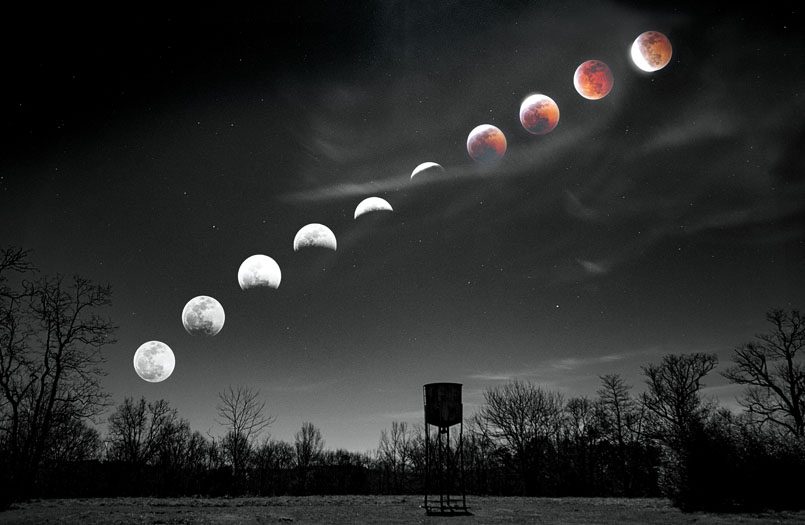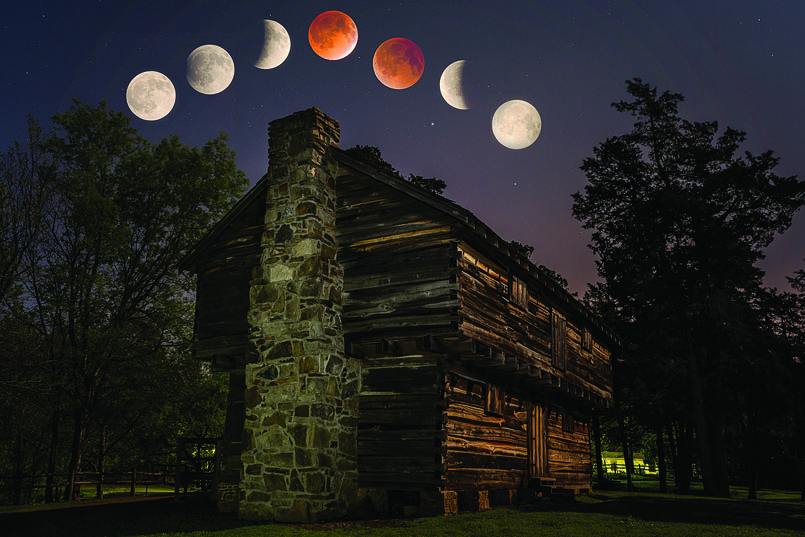01 May 2022 Shoot the moon
Story and photos by Linda Henderson
A lunar eclipse is the easiest sky-watching event to observe, and the 501 will have the opportunity to view two this year. The first eclipse of the year will start after sunset May 15. The second will be Nov. 8. All you need to watch a lunar eclipse is a pair of eyes and a cloudless sky. Unlike a solar eclipse, lunar eclipses are safe to observe without protective equipment for your eyes or your camera.

A total lunar eclipse occurs when the moon passes through Earth’s shadow. Lunar eclipses only happen during a full moon. To catch a glimpse of the next one, look up in the eastern skies May 15-16. According to NASA, the lunar eclipse will begin with the shadow of Earth touching the moon’s face at 8:32 p.m. May 15. The eclipse will start low in the southeastern sky just after sunset. Total eclipse of the moon will occur at 10:29 p.m. when the moon turns red. The eclipse will conclude at 1:50 a.m. on May 16.
There are three types of lunar eclipse, penumbral lunar eclipse, partial lunar eclipse, and a total lunar eclipse. A penumbral lunar eclipse takes place when the moon moves through the outer part of Earth’s shadow. These eclipses are very faint and are hard to observe. Partial lunar eclipse occurs when Earth moves between the sun and a full moon. They are not completely aligned. Only part of the moon’s visible surface moves into Earth’s shadow. These eclipses are visible. A total lunar eclipse occurs when the entire moon passes through Earth’s shadow. During a total lunar eclipse, the moon turns a vivid red.
A lunar eclipse begins with a small shadow on the edge of the moon which slowly passes over. Over the next two hours, the shadow on Earth grows deeper. The moon appears to become thinner until the moon is a small slice. The sky becomes darker, and stars become visible. The moon does not completely disappear, but an eerie darkness takes over the entire sky. As Earth’s shadow passes, the moon reflects the light of the sun. The sun’s light gives the moon a dim red glow during the totality of the eclipse. A glow of reflected light will be seen around the edge of the moon. According to NASA scientists, the color of the moon will range from a deep red to a copper color. Particles and smoke in the atmosphere will determine how red the color will be.

So make plans to do a little moon watching. A telescope or binoculars are not required, but if you have one, use them to enhance your view. Find a clear eastern view, look up, and marvel at God’s creation. Bring snacks, blankets, chairs, and enjoy the show in the 501 skies.
- Landscapes of liberty - June 30, 2024
- Getting the shot of a lifetime - February 1, 2024
- The road to Gothic Mountain - October 9, 2023











